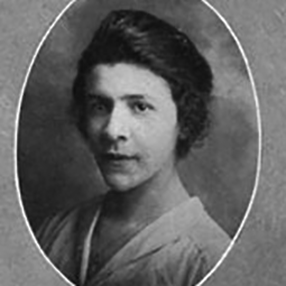Theft
The moon
Was an old, old woman, tonight,
Hurrying home;
Calling pitifully to her children,
The stars,
Begging them to go home with her
For she was afraid,
But they would not.
They only laughed
While she crept along
Huddling against the dark blue wall of the Night
Stooping low,
Her old black hood wrapped close about her ears,
And only the pale curve of her yellow cheek
With a tear in the hollow of it
Showing through.
And the wind laughed too,
For he was teasing the old woman,
Pelting her with snowballs,
Filling her old eyes with the flakes of them,
Making her cold.
She stumbled along, shivering,
And once she fell,
And the snow buried her;
And all her jewels
Slid from the old bag
Under her arm
And fell to earth,
And the tall trees seized them,
And hung them about their necks,
And filled their bony arms with them.
All their nakedness was covered by her jewels,
And they would not give them back to her.
The old moon-woman moaned piteously,
Hurrying home;
And the wild wind laughed at her
And her children laughed too,
And the tall trees taunted her
With their glittering plunder.
This poem is in the public domain. Published in Poem-a-Day on December 17, 2022, by the Academy of American Poets.
“Theft” was published in Opportunity vol. 3, no. 28 (April 1925). Discussing the use of whiteness as a metaphor in the poetry of Harlem Renaissance women, Maureen Honey, former professor of English and director of women’s studies at the University of Nebraska-Lincoln, writes in the introduction to Shadowed Dreams: Women’s Poetry of the Harlem Renaissance (Rutgers University Press, 1989) that “[a] more complicated use of white metaphors appears in Esther Popel’s ‘Theft.’ [. . .] The trees are uncharacteristically ominous in this poem, but the usage of moon and snow are typical. The snow blinds this old woman, trips and envelops her; it causes her to lose a small treasure carefully guarded. Finally, its companion, the wind, laughs at her piteous moans and turns her own children against her when they are found. Negative white elements are found in a double sense here: the desperate mother is defeated by them, and she is herself white, or rather yellow, the color of old white paint. Popel’s central figure is ambiguous in that she evokes pity, modifying the image [in Harlem Renaissance poetry] of the moon as dangerous. At the same time, she represents weakness, debilitation, and devastating loss.”

